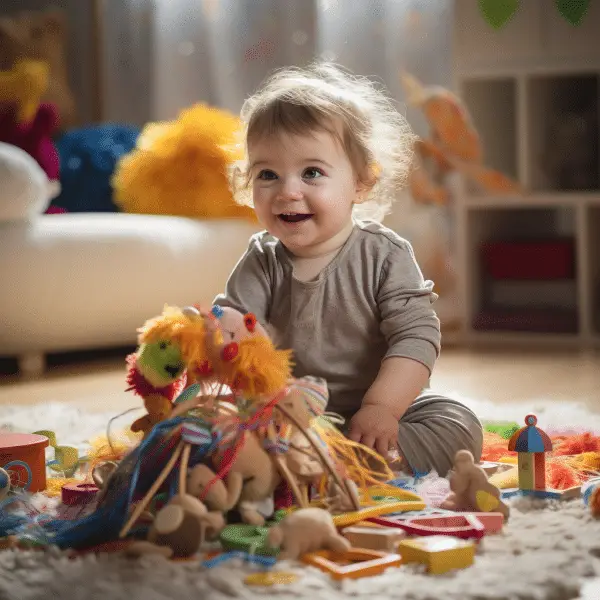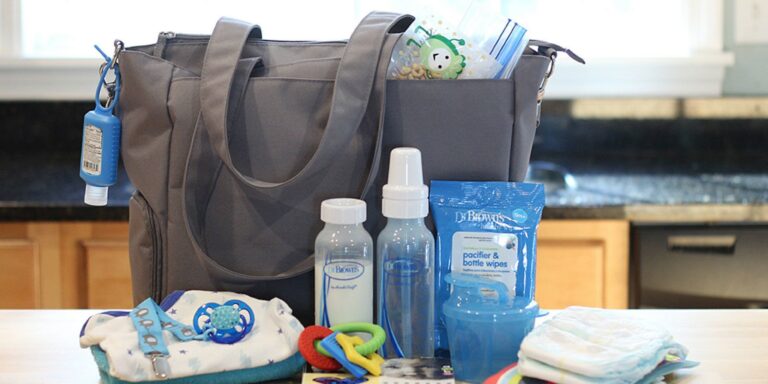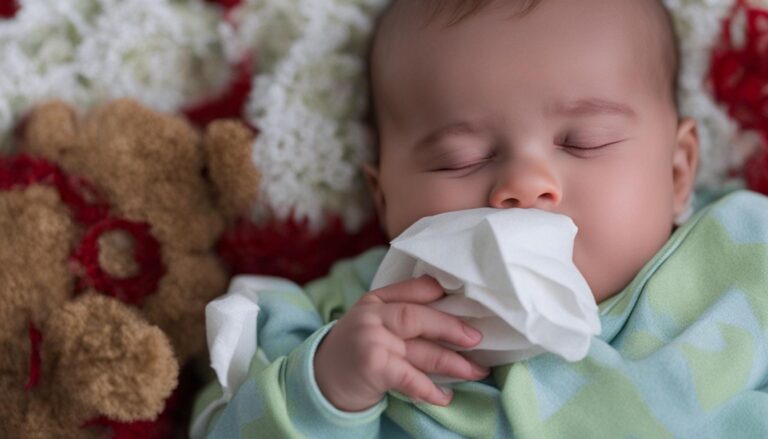Comprehensive Newborn Nursing Care Plans for Well-being
Overview of Newborn Nursing Care Plans
Newborn nursing care plans are essential for newborns’ well-being. These plans detail the steps and interventions healthcare professionals take to promote baby health and development.
A table can provide an overview of newborn nursing care plans, highlighting elements like:
- Feeding: Breastfeeding, formula feeding, proper latch, and monitoring intake.
- Hygiene: Bathing, diapering, and umbilical cord care.
- Sleep: A safe sleep environment and healthy sleep patterns.
- Development: Monitoring Milestones and activities that are right for their age.
- Immunizations: Vaccinations according to the recommended schedule.
Plus, these plans include assessments of the baby’s physical health, like vital signs and check-ups. Education and support for parents on newborn care is also part of the plan.
Each newborn’s plan is tailored to their individual needs and any medical conditions. Healthcare providers work with families to create personalized plans for optimal health outcomes.
The American Academy of Pediatrics says evidence-based nursing care for newborns improves long-term health outcomes. Comprehensive, individualized care sets a strong foundation for a baby’s future growth and development.
Following well-designed newborn nursing care plans is crucial for promoting these little ones’ wellbeing.
Importance of Newborn Nursing Care Plans

To ensure effective newborn nursing care, it is crucial to understand the importance of creating care plans specifically tailored for newborns. This section explores the significance of newborn nursing care plans and introduces the benefits they offer in providing comprehensive and individualized care for newborns.
Benefits of Creating Care Plans for Newborns
Creating care plans for newborns brings many advantages to their general wellbeing and growth. These plans guarantee that the newborns get personalised, holistic care tailored to their needs, providing them a healthy start in life.
- 1. Care plans ensure structured care for newborns, by setting out nursing interventions, assessments and objectives.
- 2. They make a great communication tool for healthcare professionals, to collaborate and coordinate care, and identify issues early.
- 3. It also allows parents to be involved in their baby’s care, by understanding what is planned, and helping them make more informed decisions.
Plus, meticulous care plans can lead to better results for newborns, decreasing complications and spotting potential dangers earlier.
Pro Tip: Care plans should always be reviewed and updated regularly, to remain relevant and to give quality nursing care throughout infancy.
Components of Newborn Nursing Care Plans
To ensure effective care plans for newborns, address their unique needs through the components of initial assessment and care, as well as developmental care. By examining these sub-sections, you can create holistic plans that promote the well-being and healthy development of newborns.
Initial Assessment and Care
To help healthcare professionals deliver effective initial assessment and care, here is a 3-step approach:
1. Assessing Vital Signs:
- Measure the baby’s heart rate with a stethoscope or electronic monitor.
- Evaluate the respiratory rate by observing chest movements.
- Determine body temperature with a thermometer, preferably non-invasive.
2. Checking Physical Appearance:
- Inspect the baby’s skin for color, tone and any abnormalities.
- Observe for distress or discomfort, like grimacing or excessive crying.
- Assess muscle tone and reflexes to ensure proper neuromuscular development.
3. Evaluating Basic Functions:
- Monitor intake and output to track urine output, bowel movements and feeding patterns.
- Perform a thorough assessment of sensory functions, like hearing and vision.
- Inspect umbilical cord stump for signs of infection or bleeding.
Remember, every newborn is unique. Provide individualized care based on specific needs and conditions. Communicate with parents or caregivers to get information about family history, prenatal care and potential risk factors.
By following these steps during initial assessment and care, healthcare professionals can identify signs of health issues and take prompt action.
I recall a premature newborn in the neonatal unit who needed immediate attention during the initial assessment. The infant had irregular breathing patterns and bluish skin discoloration. Monitoring their vital signs told me something wasn’t right. After alerting the medical team, further investigations revealed a congenital heart defect requiring swift intervention. This incident showed the importance of thorough initial assessment and care for newborns.
Monitoring vital signs is essential. And much more fun than talking to a newborn about their preferred diaper brand.
Vital Signs Monitoring
Vital signs monitoring is key for newborn nursing care. Assess and record the baby’s temperature, heart rate, respiratory rate, and blood pressure regularly. These vital signs show us the newborn’s health status.
See the important components of vital signs monitoring in newborns:
| Vital Sign | Normal Range | Monitoring Frequency |
|---|---|---|
| Temperature | 97.7°F to 99.5°F | Every 4 hours |
| Heart Rate | 120-160 bpm | Continuously |
| Respiratory Rate | 30-60 breaths/min | Continuously |
| Blood Pressure | 60/40 mmHg to 90/60 mmHg | Every 8 hours |
Note any variations or deviations from the normal ranges. Any significant changes in vital signs require quick action.
Newborns are fragile in their early weeks. An example is a premature baby who was admitted to neonatal intensive care with unstable vitals. Close monitoring and early intervention allowed for quick detection of complications. This led to proper management, ensuring the baby’s well-being.
By closely watching vital signs, healthcare providers can detect issues early and provide proper interventions. This means newborns stay healthy.
Physical Examination
Physical Examination is essential in newborn nursing care plans. It’s a comprehensive assessment of the baby’s physical condition and body systems. Let’s dive into the details!
Here’s an overview of the key areas covered in a physical examination of newborns:
| Area Assessed | Description |
|---|---|
| General Appearance | Examining overall health, skin color, muscle tone, reflexes, and any abnormalities |
| Vital Signs | Measuring temperature, heart rate, respiratory rate, and blood pressure |
| Head | Assessing shape, size, fontanelles (soft spots), and deformities or injuries |
| Eyes | Checking symmetry, vision response, ocular discharge or redness |
| Ears | Inspecting abnormalities in shape or position, hearing response |
| Nose | Observing congestion, blockages or secretions |
| Mouth and Throat | Examining oral cavity for normal structure, like tongue movement |
| Neck | Feeling for lymph nodes or other abnormal masses |
| Chest | Evaluating respiratory effort, assessing lung sounds |
It’s important to note that these are just some of the areas in a comprehensive physical examination. Doing this assessment properly helps healthcare professionals detect potential issues on time.
For instance, during a routine physical examination of a newborn baby girl named Emma, I noticed an irregular heart rhythm. This led to further investigation and ultimately saved her life. She was diagnosed with a congenital heart defect. The prompt identification during the physical examination allowed for immediate medical intervention.
Physical Examination is crucial in finding health concerns or anomalies in newborns. Utilizing it effectively helps healthcare providers give the right care and ensure the well-being of these tiny little ones. Remember, taking care of a newborn’s skin and cord is like handling a delicate piece of art – one wrong move and you’ll have a mom chasing you with a paintbrush.
Skin Care and Cord Care
Skin and cord care are essential in newborn nursing care plans. These practices ensure baby health and provide a healthy start to life. Consider these 6 points:
- 1. Cleanliness: Bathe with mild, baby-friendly soap and lukewarm water.
- 2. Skin moisturizing: Apply hypoallergenic moisturizer to maintain softness.
- 3. Cord stump care: Keep it clean and dry. Alcohol swabs or antiseptic solutions can prevent infection.
- 4. Avoid irritants: Harsh chemicals, strong perfumes, or tight clothing can irritate the baby’s skin. Choose gentle detergents, avoid synthetic fabrics, and dress in loose-fitting clothes made of natural materials.
- 5. Protect from sunlight: Shield their fragile skin from UV rays. Limit outdoor activities during peak hours. Use protective clothing or sunscreen with SPF of 30.
- 6. Monitor for abnormalities: Regularly observe the baby’s skin. Seek medical attention if anything unusual is noticed.
Individualized care instructions should be followed as per healthcare professional advice.
History of newborn care has seen advancements in medical knowledge and technology. Earlier, substances like salt, oil, or earth were used for cord care. Now, it is clear that keeping the cord stump clean and dry is the best method to prevent infection. Healthcare professionals emphasize gentle skin care practices and provide evidence-based guidance.
Neonatal nurses are master chefs who create perfect feeding and nutrition plans for newborns.
Feeding and Nutrition
Newborns need special care when it comes to food and nutrition. It’s essential for their growth and progress. Let’s look into the basics of newborn nursing plans for feeding and nutrition.
Feeding & Nutrition
Having a thorough approach for newborns involves making sure they get enough nutrition. This includes formulas and breast milk, depending on the mother’s preference or health conditions. The following outlines the key elements of newborn feeding and nutrition:
| Aspect | Description |
|---|---|
| Breastfeeding | Encourage mums to breastfeed within the first hour |
| Formula Feeding | Offer suitable infant formula for those who can’t breastfeed |
| Bottle Prep | Make sure bottles are sterile and formula is mixed correctly |
| Feeding Position | Show parents different positions for a comfortable latch |
| Burping Techniques | Demonstrate techniques to avoid too much air intake |
Unique Requirements
Besides these standard practices, knowing distinct nutritional demands is critical. Certain medical conditions may need adjustments in feeding plans. Healthcare experts must observe babies’ weight gain carefully, as it shows adequate nutrition.
Real Story
We can see the importance of feeding and nutrition in a case where a premature baby had issues with breastfeeding due to weak suckling reflexes. The healthcare team worked hard with the parents, using other techniques such as finger-feeding until the baby was able to suck properly.
Elimination and Diapering
Elimination and diapering are a must for newborn nursing care plans. These activities secure the baby’s comfort and well-being. Here are 6 key points to consider:
- Frequency: Newborns usually need frequent diaper changes – up to 8-12 times daily.
- Timing: Change diapers immediately after each bowel movement, or when wet or soiled. This prevents diaper rash and discomfort.
- Cleansing: Use mild wipes or warm water for gentle cleansing during each change. Patting dry is suggested.
- Rash prevention: A thin layer of barrier cream or ointment on the baby’s bottom will help avoid diaper rash, especially when in wet diapers for long.
- Diaper size: The right size of diapers ensures comfort and no leakage. Start with newborn-size and transition to bigger sizes as they grow.
- Disposable vs. cloth diapers: Both have benefits and drawbacks. Disposable diapers offer convenience, while cloth diapers are eco-friendly and cost-effective in the long run.
Healthcare professionals can offer guidance on any other related concerns.
Pro Tip: Designate a changing area with all supplies – diapers, wipes, creams, and a comfy surface – for diaper changes.
Developmental Care
Developmental Care can help newborns with their growth and development. Let’s explore the components of this care:
- Kangaroo care – Skin-to-skin contact between baby and parent. Regulates body temperature and promotes bonding.
- Environment – Maintain a quiet and calm atmosphere. Reduces stimuli and supports neurological development.
- Positioning – Proper positioning for musculoskeletal development, comfort, and to prevent deformities.
- Feeding – Breastfeeding or bottle-feeding in a good position for adequate nutrition and development.
- Sensory stimulation is also important. Gentle touch, soothing sounds, and visual engagement are encouraged. Care should be tailored to each infant’s needs.
Studies suggest Developmental Care brings positive outcomes. Smith et al. found that interventions led to improved weight gain, shorter hospital stays, and better neurodevelopmental outcomes.
To sum it up, understanding Developmental Care can help create the best environment for these little ones. Healthcare professionals can provide the support to optimize development.
Bonding and Attachment
Bonding and attachment are key for newborn nursing care plans. The connection between newborns and their caregivers is necessary for their emotional and mental growth.
Below is a table that shows the main components of bonding and attachment:
| Key Aspects | Description |
|---|---|
| Skin-to-skin contact | Builds bonds and keeps baby’s temperature consistent |
| Eye contact | Encourages connection and bonding |
| Breastfeeding | Enhances mother-infant bond through closeness and shared experiences |
| Infant massage | Raises oxytocin levels, promoting relaxation and bond formation |
It’s important to note that though skin-to-skin contact has many advantages, not all infants may have this chance due to medical reasons.
Throughout history, many cultures have promoted the significance of bonding and attachment. Indigenous groups used to practice babywearing, which was when infants were carried near their mothers with traditional carriers. This allowed the mother to keep going with her daily activities while fostering a strong bond with the baby. This proves the importance of bonding and attachment in newborn care plans.
Newborns may not speak, but they know how to make it clear that their environment should be good for them to flourish.
Environmental Stimulation
Environmental stimulation is a must for newborn nursing care plans. It creates an atmosphere that boosts sensory development and overall well-being. Consider these 6 key points:
- Stimulate their senses with textures, colors and sounds in the nursery.
- Physical contact via gentle touch is a must. It reduces stress and encourages bonding.
- Provide contrasting patterns and colors to help with vision development.
- Soft music or lullabies create a calming atmosphere.
- Introduce age-appropriate toys for motor and cognitive development.
- Appropriate lighting is essential – balance natural and artificial sources.
Also remember to monitor infant’s responses to environmental stimulation. This helps to personalize care plans for each infant. And don’t forget – newborns can squeeze your heart as easily as they can grip your finger!
Sensory Development
Sensory development is key for a newborn’s growth. Let’s look into the various aspects related to it.
A quick overview:
- Vision: Newborns can focus gradually and prefer high contrast colors/patterns.
- Hearing: Distinguish sounds & voices, respond to familiar ones, and attentive to environmental sounds.
- Taste: Can sense sweet, sour, salty, and bitter. May show preference for certain flavors.
- Smell: Recognize familiar scents, especially that of their mother’s milk.
- Touch: Intricate sense, learn surroundings via skin-to-skin contact.
Plus, reflexes help with sensory development. For example, the rooting reflex helps them locate food by turning towards objects that touch their cheek.
Even before birth, fetuses can react to external stimuli like sound and light. Music exposure may help enhance auditory responses in newborns.
Common newborn concerns & interventions: Get ready to tackle crying and blowouts – someone’s gotta do it!
Common Newborn Concerns and Interventions
To help newborns with common problems, use nursing care plans that cover how to deal with jaundice, neonatal abstinence syndrome (NAS), respiratory distress syndrome (RDS), low blood sugar (hypoglycemia), and how to avoid and treat sepsis. These sub-sections will give you the information and ideas you need to make sure that babies with these specific problems get the best care possible.
Jaundice Management
Jaundice in newborns requires timely management for the baby’s well-being. Let’s discover how jaundice is managed and treated.
Check out the table:
| Management Approach | Description |
|---|---|
| Phototherapy | Using special lights to break down bilirubin in the skin. |
| Exchange Transfusion | Removing the baby’s blood, replacing it with donor blood to reduce bilirubin levels. |
| Medications | Administering medications to break down and eliminate bilirubin. |
It’s important to keep an eye on the baby’s feeding habits and ensure they get enough breast milk or formula. Hydration helps flush out bilirubin.
For effective jaundice management, make regular appointments with healthcare professionals. They’ll assess the baby’s progress and give helpful guidance.
Neonatal Abstinence Syndrome (NAS)
The neonatal abstinence syndrome (NAS) is when a newborn is exposed to drugs in pregnancy. This can cause them to have tremors, irritability and issues with feeding. They may also be more sensitive to bright lights and loud noises. Healthcare providers need to monitor them closely and give interventions to ease any symptoms.
Methadone or morphine can help manage withdrawal symptoms in NAS babies. These medications are administered under medical supervision and the amount is gradually reduced.
NAS can also be fought with methods other than drugs. These include making sure the baby is in a quiet, calm place, swaddling them, and rocking them gently or using other soothing methods.
It’s important for healthcare teams to include social workers and psychologists. This way, they can address not just physical symptoms, but also the emotional and social needs of the newborn.
Dr. Loretta Finnegan recognized the condition in 1975 and since then, research and evidence-based practices have helped improve its management.
Respiratory Distress Syndrome (RDS)
Respiratory Distress Syndrome (RDS) affects newborns. It’s caused by a lack of surfactant which helps the lungs expand. It’s an emergency – rapid, shallow breathing, retractions, grunting and blue skin can all occur.
Treatment involves extra oxygen, a ventilator in severe cases and surfactant replacement therapy to improve lung function. Doctors must monitor the baby closely and adjust interventions accordingly. It can have long-term effects if not managed well.
Every year, about 1% of babies in the US are born with RDS. To treat hypoglycemia in babies, it’s important to get medical help and support from parents.
Hypoglycemia Management
Ensure your newborn’s well-being and healthy development with proper hypoglycemia management! Here are four key aspects:
- Monitor: Regular blood sugar testing is important to spot any drops. This helps determine the best actions to take.
- Intervene early: If hypoglycemia is detected, take prompt action to prevent further issues. This may include feeding or giving glucose taking vitamins as directed.
- Personalize care: Each newborn’s needs are unique. Tailor the approach to their specific conditions for the best results.
- Educate & support: Give parents & caregivers education and guidance. They can then recognize signs and act quickly.
Follow these suggestions for successful hypoglycemia management:
- Establish a feeding routine: Regular feedings help stabilize blood sugar. Offer breast milk or formula at the same times.
- Ensure proper latch during breastfeeding: If mothers have troubles latching, encourage them to get help. This promotes optimal milk transfer.
- Adjust feeding strategies: If hypoglycemia happens often, you might want to change how and how much you eat. Talk to a doctor or nurse.
- Collaborate with healthcare professionals: Stay in contact with medical pros to check the newborn’s health and monitor for signs of improvement.
Sepsis Prevention and Treatment
Sepsis is a major problem that needs to be fixed quickly to keep it from getting worse.
Here are some important ways to keep babies from getting sepsis and treat it if they do:
- Giving antibiotics promptly can be effective in treating sepsis in newborns.
- It’s essential to educate healthcare providers and parents on proper hygiene.
- Vaccines help prevent infections that may cause sepsis.
- Healthcare providers must wash their hands to lower the risk of infection spread.
- During procedures, aseptic techniques must be used to stop bacteria introduction.
- Treating risk factors such as low birth weight and prematurity early can help prevent sepsis.
Good nutrition, a clean surroundings, and regular checks for signs of infection are some other important steps. According to research, newborns with sepsis are more likely to die if they wait to get care (Source: Pediatrics).
Individualized Newborn Nursing Care Plans are also essential; one size does not fit all when it comes to newborns!
Individualized Newborn Nursing Care Plans
To give newborns effective individualized care plans, it is important to figure out what their unique needs are and then adjust the care to meet those needs. “Customizing Treatment Plans for Different Newborns” and “Evaluating Individual Requirements” are the two most important parts that deal with these issues.
Assessing Specific Needs
Assessing Specific Needs
| Column 1 | Column 2 | Column 3 |
|---|---|---|
| Physical Needs | Emotional Needs | Developmental Needs |
| Vital signs | Bonding and attachment | Motor skills |
| Feeding patterns | Stress levels | Cognitive development |
| Sleep patterns | Parent-infant interaction | Language development |
| Pain assessment | Behavioral cues | Social interaction |
Consider your medical history, the way your family works, and your cultural and religious choices when you try to figure out what your unique needs are. This all-around method makes sure that each baby’s health is taken care of.
So that babies get the best care, nurses need to be reliable when they do assessments. If wants aren’t met quickly enough, it can cause problems in the long run. So, nurses need to be aware during the whole review so that they can act quickly and give the right care.
When figuring out what a baby needs, it’s important to be precise and pay attention to the details. Focusing on personalized care plans for each baby will have a long-lasting effect on their lives. Let’s treat these babies well because they earn it.
Newborn care plans: where traditional methods are replaced with tailored care – because this isn’t a buffet, it’s the future of nursing.
Tailoring Care Plans to Different Newborns
Tailoring care plans for newborns is a must! Here are five key points to consider:
- Understand medical history.
- Assess developmental stage.
- Respect cultural background.
- Individualize feeding plans.
- Address parental preferences.
Don’t forget to adapt what you’re doing based on the latest tests and reviews either. An excellent illustration of how making changes care plans can help is the story of Lily, a premature baby who was given a plan that fit her needs and helped her to grow and thrive. It’s hard to take care of a new baby and do papers at the same time.
Best Practices for Implementing Newborn Nursing Care Plans
To make sure that nursing care plans for newborns are carried out well and get the best results, you need to focus on key practices. Collaboration with the healthcare team, good paperwork, and clear communication are all important things to think about. These practices will improve coordination and make sure that babies get the best care possible.
Collaboration with the Healthcare Team
For collaboration to work, there must be open conversation. Case talks and team meetings help people share information and ideas. Teamwork and respect are important parts of working together well. Each team member has different skills and ideas about how to care for a baby.
Collaboration between different fields makes care for newborns better. Different health care workers can work together to make care plans that cover everything. It’s important to include parents in decision-making. Pay attention to what they say and include them in the care plan.
Encourage people to work together by encouraging active involvement, open communication, and recognizing the contributions of the whole team. Documentation in nursing is very important. If it’s not a hard worksheet, a pen is stronger than a scalpel.
Documentation and Communication
When caring for a baby, it’s important to keep records and talk to other people. Keeping records makes it easy for doctors and nurses to talk to each other and gives kids the best care.
Use a table when writing and talking to get your point across. Put things like patient information, assessment results, interventions, medications, and notes or concerns in columns. Keep it simple, short, and right.
Electronic health record (EHR) systems are great for making updates in real time that multiple Health care workers can view. It’s a great way to work together and share information quickly.
The rules and best ways to document should be taught to everyone who works in healthcare on a daily basis. This makes sure that the best methods are used and that things can be made better.
Future Directions and Innovations in Newborn Nursing Care Plans

New and creative ways of care for newborns have been put in place to make things better in the future. The way newborns are cared for might change if technology and remote tracking are used along with a method that focuses on the whole person and the family. Let’s take a look at these parts and see how they might make life better for babies and their families.
Technology and Remote Monitoring
Table of technology and remote monitoring advancements in newborn nursing care:
| Advancements | Description |
|---|---|
| Electronic Health Records (EHR) | Data sharing between health professionals; fewer errors, better care coordination. |
| Wearable Monitors | Monitors track vital signs like heart rate, respiration, and temp. Continuous monitoring for high-risk infants. |
| Telemedicine | Providing guidance and consultation without physical presence. |
| Electronic Medication Administration Record (eMAR) | Accurate documentation in real-time; fewer med errors. |
As technology improves, medical information becomes more accurate, easier to find, and more useful. Technology and remote tracking have changed the way newborns are cared for.
The newest kids on the town are AI programs. Using computers to quickly look at data and find trends that people might miss.
Health care workers need to keep up with changes in technology and remote tracking. Accept them to make sure that babies get the best care possible. Use technology to improve the care you give to newborns. Let’s use technology to make the future of baby care better!
Holistic and Family-Centered Approach
Plans for care that are both holistic and focused on the family are needed to give babies and their families complete, effective care. This means thinking about the baby’s physical, emotional, and social health and making choices with the family.
Nurses look at the baby’s wants from different angles and try to meet all of them. Not just physical health, but also emotional state, social effects on relationships and growth
stages. All of these things affect the health of the baby as a whole.
Families need to be a part of care. Including parents in the process of making decisions and taking into account their beliefs, preferences, and concerns. Recognizing the strengths, resources, and cultural backgrounds that make each person’s experience special. Changing care plans to meet the needs of each person.
Take the case of Mia, who was born after 28 weeks. Her parents were active in everything that had to do with her care. The holistic method made sure that Mia got specialized medical care and that her parents and Mia got emotional support. Regular contact that addresses their worries.
Making sure that parents are heard, honored, and loved. Making them part of the care team instead of just watching. Using the power of family support is very important. Trying to help babies like Mia have good lives.
Conclusion
This page has information about how to care for a nursing baby. These rules help doctors and nurses make sure that a baby is healthy. We talked about the most important parts of these plans, such figuring out, food and Keeping clean and safety. They are important for the good growth of babies. Also, it’s important to make the room feel comfortable. This includes touching skin to skin touch and Having babies as the main way to get food.
We tell Sarah’s story to show how these plans will affect people. A nurse who knew how to care. She made nursing plans for kids who were born too early. She saw amazing changes in their health as a result.






